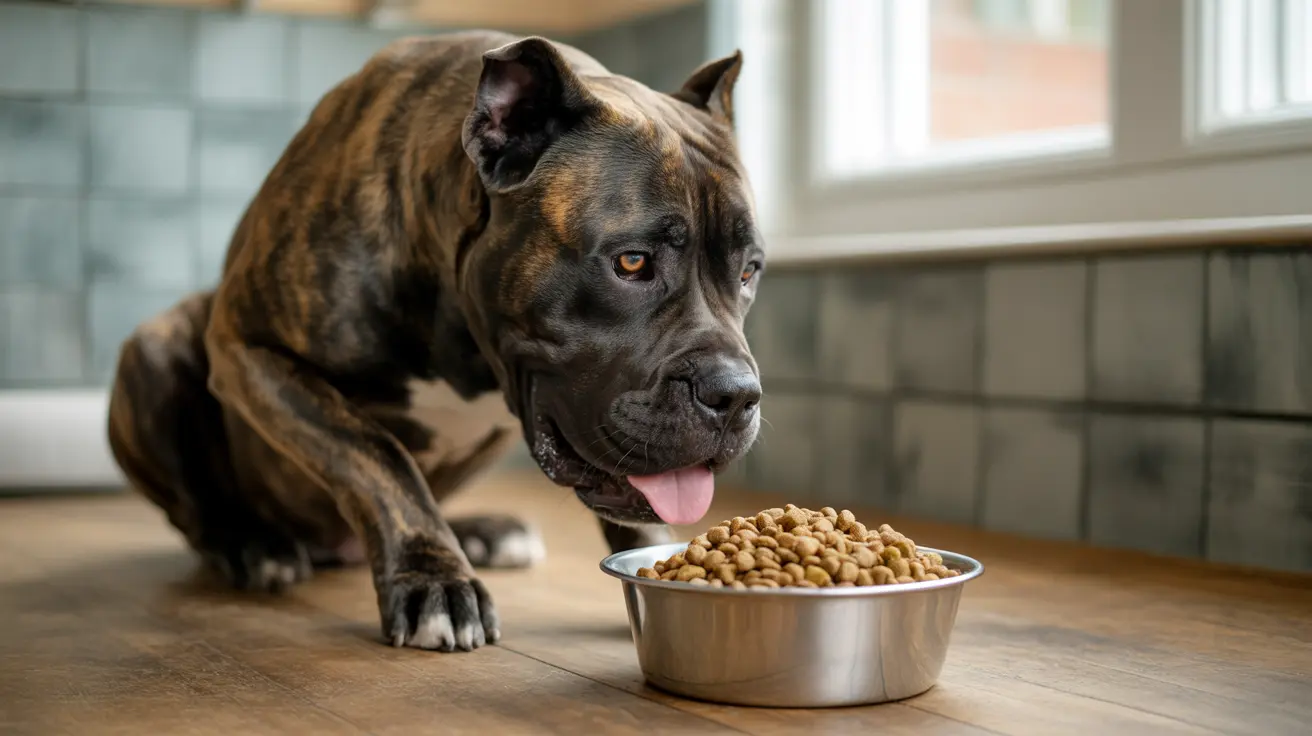Understanding Cane Corso Drooling Patterns
Cane Corsos typically rank around a 3 on the 1-5 drooling scale, placing them in the moderate category. This means while you'll definitely notice some drool, it's significantly less than what you'd experience with breeds like Saint Bernards or English Mastiffs.
The amount of drool varies between individual dogs, largely depending on their facial structure. Corsos with tighter lips tend to drool less, while those with looser jowls may produce more "stringers" – those characteristic threads of saliva that hang from their mouths.
Common Triggers for Drooling
Food and Water-Related Drooling
The most common trigger for increased drooling in Cane Corsos is food anticipation. When your dog smells something delicious or knows it's mealtime, you can expect more saliva production. Similarly, drinking water often results in a combination of water and drool around their feeding area.
Environmental and Emotional Triggers
Heat, exercise, and emotional states can significantly impact drooling. You might notice increased drool during:
- Hot weather
- Physical activity
- Excitement or stress
- Car rides
- Vet visits
Managing Your Cane Corso's Drool
While you can't eliminate drooling completely, there are several effective management strategies:
- Keep cleaning cloths strategically placed around your home
- Use waterproof mats under water bowls
- Consider using specially designed drool bibs for especially drooly periods
- Maintain regular face cleaning routines, especially after meals and drinks
When to Be Concerned About Excessive Drooling
While some drooling is normal, certain signs warrant veterinary attention:
- Sudden increases in drooling
- Thick or discolored saliva
- Bad breath accompanying excessive drool
- Difficulty eating or swallowing
- Signs of pain or discomfort
Frequently Asked Questions
Do Cane Corsos drool more than other dog breeds?
Cane Corsos drool moderately compared to other breeds. They typically drool more than breeds with tight lips like Poodles but significantly less than heavy droolers like Saint Bernards or Newfoundlands.
What causes drooling in Cane Corsos, and when is it normal?
Normal drooling is typically triggered by food anticipation, drinking water, heat, exercise, or excitement. It's particularly noticeable during meals and after drinking water.
How can I manage and reduce drooling from my Cane Corso?
While you can't eliminate drooling completely, you can manage it by keeping cleaning supplies handy, using drool bibs when needed, and maintaining regular face-cleaning routines.
When should I be concerned about excessive drooling in my Cane Corso?
Be concerned if you notice sudden increases in drooling, changes in saliva consistency or color, bad breath, or if drooling is accompanied by other symptoms like difficulty eating or lethargy.
Does the facial structure of a Cane Corso affect how much they drool?
Yes, facial structure significantly impacts drooling amount. Cane Corsos with looser jowls and lips tend to drool more than those with tighter facial features.
Conclusion
While Cane Corsos do drool, it's generally manageable and shouldn't deter you from considering this remarkable breed. With proper preparation and care routines, you can effectively manage their drooling while enjoying all the wonderful qualities these loyal and affectionate dogs have to offer.






